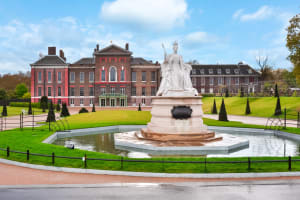
Photo credits: ©The Trustees of the Natural History Museum, London.
The Natural History Museum is a world-renowned museum of natural history located in London, UK. The museum was founded in 1881 and is home to a vast collection of over 80 million specimens and artifacts from the natural world.
The museum is divided into several galleries, each with its own theme and exhibits. The Blue Zone features the museum's most iconic specimens, including the famous Diplodocus dinosaur skeleton, a blue whale skeleton, and a collection of fossils and minerals. The Green Zone is focused on the natural world and includes exhibits on biodiversity, ecology, and climate change. The Red Zone features exhibits on human biology, evolution, and anthropology, including a gallery dedicated to Charles Darwin.
The museum also has a number of temporary exhibits and special events throughout the year, ranging from live animal exhibits to art installations. Additionally, the museum offers educational programs and resources for visitors of all ages, including workshops, talks, and online resources.
One of the museum's most distinctive features is its Victorian architecture, including the grand Hintze Hall entrance and the intricate terracotta façade. The museum also boasts a number of stunning galleries and spaces, including the Central Hall, the Darwin Centre, and the Earth Hall.
The Natural History Museum is one of the most visited museums in London and is widely recognized as a leading institution in the study and preservation of the natural world.
Explore Near Natural History Museum London
Discover 5 attractions, 5 cities, and 3 airports within 75km. Perfect for planning day trips, finding connecting flights, or discovering new destinations to explore during your visit.
Nearby Attractions & Places to Visit
5 destinations within 309m - 2.4km from your location





Nearby Cities Worth Exploring
5 destinations within 1.1km - 3.8km from your location
Airports Near Natural History Museum London
3 destinations within 16.1km - 38.6km from your location
Cross-Border Adventures Near Natural History Museum London
Discover cross-border adventures near Natural History Museum London. Explore neighboring countries with similar attractions and extend your travel experience across borders.
